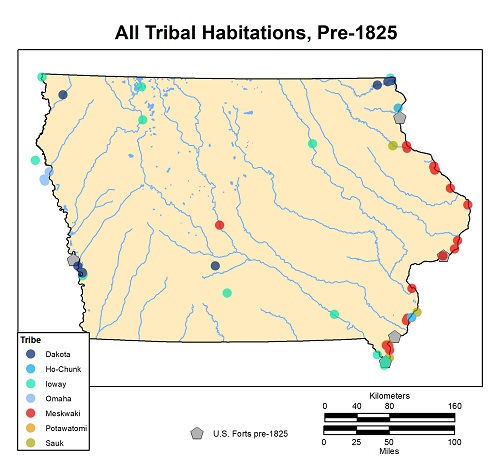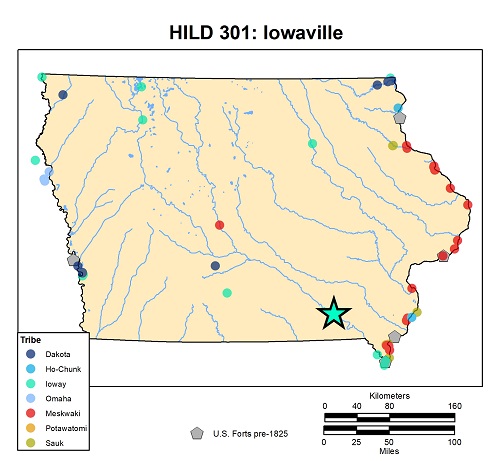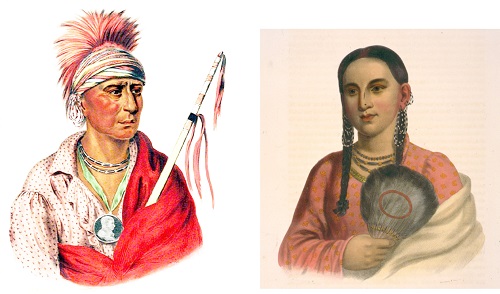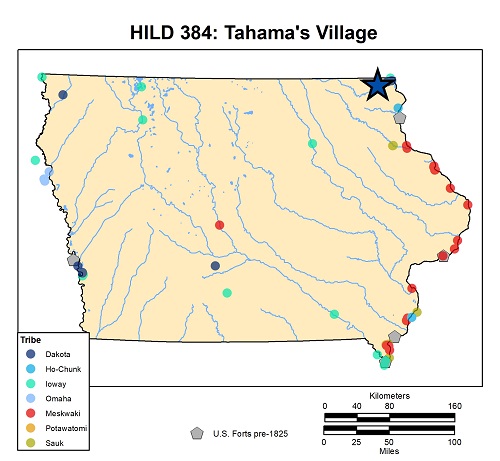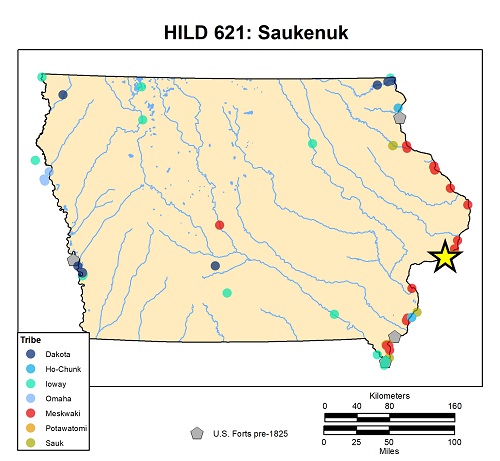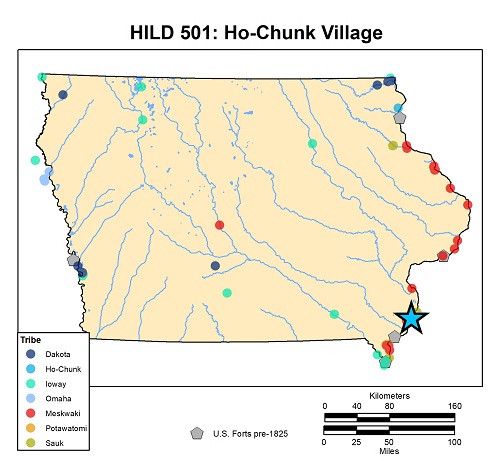Before 1825
The earliest accounts of Indians in Iowa came from explorers along the Mississippi, but there are very few tribal locations shown in historical documents in Iowa prior to 1825. After Fort Madison (1808–1813) was overrun, there was no official U.S. presence in Iowa until the establishment of Fort Des Moines No. 1 at Montrose in 1834.
Most HILD locations from this era are Oneota sites with trade goods. Tribes likely associated with Trade Oneota sites include the Dakota, Ho-Chunk, Ioway, Otoe, Omaha, and Missouria; others, such as Illinois-affiliated tribes, were part of a possible Algonquian expansion.
HILD includes Ioway camps in southern and western Iowa after 1825, and there are historical accounts of their presence through the 1830s, but most of their occupations were in Missouri or west of the Missouri River.
Historically, the Dakota traveling range expanded to St. Louis, but the intensity and extent of their habitation range was unknown. Although sparse, the data suggest Dakota were well established along the Upper Iowa and were living in central Iowa as well. The Dakota chief Tahama (aka the One-Eyed Sioux) lived along the Upper Iowa River and Wabasha maintained a village near New Albin. The Dakota also lived somewhere near what is now the Omaha, Nebraska, area; in 1822, their village was attacked by the Sauk. From 1799 to 1803 Jean Baptiste Faribault operated the Redwood Trading Post, which catered to Dakota in central Iowa. There are claims that Dakota wintered in Madison County along the North River in the 1700s and 1800s and that there they had a battle with Sauk and Meskwaki in the early 1800s.
Both the Meskwaki and the Sauk lived at and near Saukenuk, near Rock Island. Even before the establishment of Saukenuk, in the 1720s and 1730s Sauk and Meskwaki lived in three fortified villages in the interior of Iowa, along the Wapsipinicon and possibly the Des Moines Rivers. The northernmost known Sauk village in Iowa was Soutoux Village, also called the Little Fox Village, probably located near Le Claire. This village was noted in 1778 and in 1819. Sauk may have lived somewhere near the “Dirt Lodge” Trading Post (1824–1831), possibly near Des Moines, but other than this, there was no evidence of Sauk or Meskwaki living in the interior of Iowa at the time of the 1825 treaty. Sauk lived in several towns along and near the Mississippi, and controlled Mississippi trade during this era. The Sauk were the main participants in the siege of Fort Madison during the War of 1812 and before; Black Hawk is the best-remembered Sauk from these battles.
Meskwaki were well known for their mining endeavors with Julien Dubuque in the late 1700s near the city that now bears his name. They also occupied a village farther north, about three miles above the mouth of the Turkey River, in 1819.
There are scattered accounts of Ho-Chunk occupying locations along the Mississippi prior to 1825; they visited Fort Madison before it was defeated in 1813.
